Toward More Sustainable River Transportation in Remote Regions of the Amazon, Brazil
Abstract
1. Introduction
2. Main Considerations to Improve the Efficiency of Boats
3. Challenges in the Amazon Region: The Case of School Transport
3.1. Possible Economic and Environmental Impacts
3.1.1. Economic Impact
3.1.2. Environmental Impact
4. Alternatives to Improve the Performance of Small River Boats in the Amazon Region
5. Conclusions
Author Contributions
Funding
Data Availability Statement
Acknowledgments
Conflicts of Interest
References
- Hilling, D. Transport and Developing Countries; Routledge: London, UK, 2003. [Google Scholar]
- Joia, L.A.; dos Santos, R.P. ICT-Equipped Bank Boat and the Financial Inclusion of the Riverine Population of Marajó Island in the Brazilian Amazon. Inf. Syst. J. 2019, 29, 842–887. [Google Scholar] [CrossRef]
- Globo Criança do AM Dribla Barreiras e Acha em Canoa “Cantinho” Para Estudar. Available online: http://g1.globo.com/am/amazonas/noticia/2013/10/crianca-do-am-dribla-barreiras-e-acha-em-canoa-cantinho-para-estudar.html (accessed on 23 June 2020). (In Portuguese).
- Silva, J.G.D.R. Saberes e Práticas Tradicionais: As Condições Do Trabalho Nos Estaleiros Navais à Beira-Rio Da Cidade de Manaus. Ph.D. Thesis, Universidade Federal do Amazonas, Manaus, Brasil, 2016. (In Portuguese). [Google Scholar]
- UN United Nations—Department of Economig and Social Affairs, Sustainable Development. The 17 Goals. Available online: https://sdgs.un.org/goals (accessed on 2 January 2021).
- Ali, S.; Hussain, T.; Zhang, G.; Nurunnabi, M.; Li, B. The Implementation of Sustainable Development Goals in “BRICS” Countries. Sustainability 2018, 10, 2513. [Google Scholar] [CrossRef]
- Crespo, B.; Míguez-Álvarez, C.; Arce, M.E.; Cuevas, M.; Míguez, J.L. The Sustainable Development Goals: An Experience on Higher Education. Sustainability 2017, 9, 1353. [Google Scholar] [CrossRef]
- Centro de Referências Em Educação Integral. A Escola Dos Povos Ribeirinhos: Entre a Potência e Os Desafios. Available online: https://educacaointegral.org.br/reportagens/a-escola-dos-povos-ribeirinhos-entre-a-potencia-e-os-desafios/ (accessed on 2 January 2021).
- Schneider, R.R.; Ariam, E.; Veríssimo, A.; Souza, C.J.; Barreto, P. Sustainable Amazon: Limitations and Opportunities for Rural Development; The World Bank: Washington, DC, USA, 2002. [Google Scholar]
- Greene, D.L.; Wegener, M. Sustainable Transport. J. Transp. Geogr. 1997, 5, 177–190. [Google Scholar] [CrossRef]
- Pojani, D.; Stead, D. Sustainable Urban Transport in the Developing World: Beyond Megacities. Sustainability 2015, 7, 7784–7805. [Google Scholar] [CrossRef]
- Lins, N.V.M.; Rodrigues, L.R.Q.; Barreiros, N.R.; Machado, W.V. Construção Naval No Amazonas: Proposições Para o Mercado. In Proceedings of the Copinaval, Congreso Panamericano de Ingenieria Naval, Motevideo, Uruguay, 18–22 October 2009. [Google Scholar]
- Canoagem Com Quantos Paus Se Faz Uma Canoa Tradicional Ribeirinha? Available online: http://www.canoagem.org.br/arquivos/ckfinder/files/artigosobreaconstrucaodecanoas.pdf (accessed on 4 November 2020).
- Lameira, P.; Loureiro, E.; Moraes, H.; Figueiredo, N.; Benjamin, C. Optimization Design of Planning and Production Control in a Shipyard—Case Study: The Amazon Region. Marit. Technol. Eng. 2014, 1, 373. [Google Scholar]
- Andrade, C.E.R.; Santos, M.F. A Carpintaria Naval Do Nordeste Paraense: “Do Ontem Ao Hoje”. Acta Fish. Aquat. Resour. 2017, 5, 28–36. [Google Scholar]
- Medeiros, J.T.D.S. O Transporte Fluvial e o Direito à Dignidade Da Pessoa Humana Na Amazônia. Ph.D. Thesis, Universidade do Estado do Amazonas, Manaus, Brasil, 2011. [Google Scholar]
- Marinha do Brasil. NORMAM—Normas Da Autoridade Marítima; Marinha do Brasil: Brasilia, Brasil, 2020. (In Portuguese) [Google Scholar]
- George, V.; Pillai, S.A. Energy Consumption and Conservation in Indian Fisheries. Infofish 1993, 2, 62. [Google Scholar]
- Németh, P.S. O Feitio Da Canoa Caiçara de Um Só Tronco: A Cultura Imaterial de Uma Nação, Em 25 Linhas. Dossiê Para Instrução de Processo de Registro de Bem Cultural de Natureza Imaterial Junto Ao IPHAN; IPHAN: Sao Paulo, Brasil, 2018.
- Nepstad, D.; Carvalho, G.; Barros, A.C.; Alencar, A.; Capobianco, J.P.; Bishop, J.; Moutinho, P.; Lefebvre, P.; Silva, U.L., Jr.; Prins, E. Road Paving, Fire Regime Feedbacks, and the Future of Amazon Forests. For. Ecol. Manag. 2001, 154, 395–407. [Google Scholar] [CrossRef]
- Silva, S.B.; De Oliveira, M.A.; Severino, M.M. Economic Evaluation and Optimization of a Photovoltaic-Fuel Cell-Batteries Hybrid System for Use in the Brazilian Amazon. Energy Policy 2010, 38, 6713–6723. [Google Scholar] [CrossRef]
- Hochkirch, K.; Bertram, V. Engineering Options for More Fuel Efficient Ships. In Proceedings of the First International Symposium on Fishing Vessel Energy Efficiency, Vigo, Spain, 20–22 May 2010. [Google Scholar]
- Ghose, J. Basic Ship Propulsion; Allied Publishers: New Delhi, India, 2004. [Google Scholar]
- Molland, A.F.; Turnock, S.R.; Hudson, D.A. Ship Resistance and Propulsion; Cambridge University Press: Cambridge, UK, 2017. [Google Scholar]
- Isaac, V.; Almeida, M.; Cruz, R.; Nunes, L. Artisanal Fisheries of the Xingu River Basin in Brazilian Amazon. Braz. J. Biol. 2015, 75, 125–137. [Google Scholar] [CrossRef] [PubMed]
- Papanikolaou, A.; Xing-Kaeding, Y.; Strobel, J.; Kanellopoulou, A.; Zaraphonitis, G.; Tolo, E. Numerical and Experimental Optimization Study on a Fast, Zero Emission Catamaran. J. Mar. Sci. Eng. 2020, 8, 657. [Google Scholar] [CrossRef]
- Huang, F.; Chi, Y. Hull Form Optimization of a Cargo Ship for Reduced Drag. J. Hydrodyn. Ser. B 2016, 28, 173–183. [Google Scholar] [CrossRef]
- Percival, S.; Hendrix, D.; Noblesse, F. Hydrodynamic Optimization of Ship Hull Forms. Appl. Ocean Res. 2001, 23, 337–355. [Google Scholar] [CrossRef]
- Saha, G.K.; Suzuki, K.; Kai, H. Hydrodynamic Optimization of Ship Hull Forms in Shallow Water. J. Mar. Sci. Technol. 2004, 9, 51–62. [Google Scholar] [CrossRef]
- Wilson, W.; Hendrix, D.; Gorski, J. Hull Form Optimization for Early Stage Ship Design. Nav. Eng. J. 2010, 122, 53–65. [Google Scholar] [CrossRef]
- Kim, H.; Yang, C. A New Surface Modification Approach for CFD-Based Hull Form Optimization. J. Hydrodyn. 2010, 22, 503–508. [Google Scholar] [CrossRef]
- Hollenbach, U.; Friesch, J. Efficient Hull Forms—What Can Be Gained. In Proceedings of the 1st International Conference on Ship Efficiency, Hamburg, Germany, 8–9 October 2007. [Google Scholar]
- Spagnolo, G.S.; Papalillo, D.; Martocchia, A.; Makary, G. Solar-Electric Boat. J. Transp. Technol. 2012, 2, 144–149. [Google Scholar] [CrossRef]
- Ozden, M.C.; Demir, E. The Successful Design and Construction of Solar/Electric Boats Nusrat and Muavenet: An Overview. In Proceedings of the Ever Monaco 2009 Conferences on Ecological Vehicles and Renewable Energies, Monte Carlo, Monaco, 26–29 March 2009; pp. 27–29. [Google Scholar]
- Guamán, F.; Ordoñez, J.; Espinoza, J.; Jara-Alvear, J. Electric-Solar Boats: An Option for Sustainable River Transportation in the Ecuadorian Amazon. In Proceedings of the 6th International Conference on Energy and Sustainability, WIT Transactions on Ecology and The Environment, Medelin, Columbia, 2–4 September 2015; Volume 195, pp. 439–448. [Google Scholar]
- Jiang, F.; Xie, H.; Ellen, O. Hybrid Energy System with Optimized Storage for Improvement of Sustainability in a Small Town. Sustainability 2018, 10, 2034. [Google Scholar] [CrossRef]
- Zhang, B.; Ma, K.; Ji, Z. The Optimization of the Hull Form with the Minimum Wave Making Resistance Based on Rankine Source Method. J. Hydrodyn. 2009, 21, 277–284. [Google Scholar] [CrossRef]
- Park, J.-H.; Choi, J.-E.; Chun, H.-H. Hull-Form Optimization of KSUEZMAX to Enhance Resistance Performance. Int. J. Nav. Archit. Ocean Eng. 2015, 7, 100–114. [Google Scholar] [CrossRef]
- Grigoropoulos, G.J. Hull Form Optimization for Hydrodynamic Performance. Mar. Technol. 2004, 41, 167–182. [Google Scholar]
- Jeong, K.-L.; Jeong, S.-M. A Mesh Deformation Method for CFD-Based Hull Form Optimization. J. Mar. Sci. Eng. 2020, 8, 473. [Google Scholar] [CrossRef]
- Seok, W.; Kim, G.H.; Seo, J.; Rhee, S.H. Application of the Design of Experiments and Computational Fluid Dynamics to Bow Design Improvement. J. Mar. Sci. Eng. 2019, 7, 226. [Google Scholar] [CrossRef]
- Cordonnier, J.; Gorintin, F.; De Cagny, A.; Clément, A.; Babarit, A. SEAREV: Case Study of the Development of a Wave Energy Converter. Renew. Energy 2015, 80, 40–52. [Google Scholar] [CrossRef]
- Garcia-Teruel, A.; Forehand, D. Optimal Wave Energy Converter Geometry for Different Modes of Motion. In Proceedings of the 3rd International Conference on Renewable Energies Offshore, Lisbon, Portugal, 8–10 October 2018; pp. 299–305. [Google Scholar]
- Goggins, J.; Finnegan, W. Shape Optimisation of Floating Wave Energy Converters for a Specified Wave Energy Spectrum. Renew. Energy 2014, 71, 208–220. [Google Scholar] [CrossRef]
- Han, S.; Lee, Y.-S.; Choi, Y.B. Hydrodynamic Hull Form Optimization Using Parametric Models. J. Mar. Sci. Technol. 2012, 17, 1–17. [Google Scholar] [CrossRef]
- Yu, J.-W.; Lee, C.-M.; Lee, I.; Choi, J.-E. Bow Hull-Form Optimization in Waves of a 66,000 DWT Bulk Carrier. Int. J. Nav. Archit. Ocean Eng. 2017, 9, 499–508. [Google Scholar] [CrossRef]
- Brizzolara, S.; Bruzzone, D. Optimising the Steady Hydrodynamic Performance of Two High-Speed Trimaran Hull Forms. In Proceedings of the International Conference on Ship and Shipping Research, NAV 2006, Genova, Italy, 21–23 June 2006; Volume 3, pp. 1–3. [Google Scholar]
- Kükner, A.; Sariöz, K. High Speed Hull Form Optimisation for Seakeeping. Adv. Eng. Softw. 1995, 22, 179–189. [Google Scholar] [CrossRef]
- Song, S.; Demirel, Y.K.; Muscat-Fenech, C.D.M.; Tezdogan, T.; Atlar, M. Fouling Effect on the Resistance of Different Ship Types. Ocean Eng. 2020, 216, 107736. [Google Scholar] [CrossRef]
- El Moctar, O.; Sigmund, S.; Ley, J.; Schellin, T.E. Numerical and Experimental Analysis of Added Resistance of Ships in Waves. J. Offshore Mech. Arct. Eng. 2017, 139. [Google Scholar] [CrossRef]
- Sigmund, S.; El Moctar, O. Numerical and Experimental Investigation of Added Resistance of Different Ship Types in Short and Long Waves. Ocean Eng. 2018, 147, 51–67. [Google Scholar] [CrossRef]
- Gerritsma, J.; Beukelman, W. Analysis of the Resistance Increase in Waves of a Fast Cargo Ship. Int. Shipbuild. Prog. 1972, 19, 285–293. [Google Scholar] [CrossRef]
- Fundo Nacional de Desenvolvimento Da Educação (FNDE). FNDE Doa Primeiras Lanchas Escolares a Municípios Do Amazonas. Available online: https://www.fnde.gov.br/index.php/acesso-a-informacao/institucional/area-de-imprensa/noticias/item/1978-fnde-doa-primeiras-lanchas-escolares-a-munic%C3%ADpios-do-amazonas (accessed on 7 November 2020).
- Critica Oito Lanchas de Escolas Públicas de Manaus São Abandonadas. Available online: https://www.acritica.com/channels/cotidiano/news/oito-lanchas-de-escolhas-publicas-sao-abandonadas (accessed on 7 November 2020). (In Portuguese).
- Globo. Ribeirinhos Na Amazônia Viajam Mais de 3h de Barco Para Ir à Escola. Available online: http://g1.globo.com/am/amazonas/noticia/2012/04/ribeirinhos-na-amazonia-viajam-mais-de-3h-de-barco-para-ir-escola.html (accessed on 7 November 2020).
- Fundo Nacional de Desenvolvimento Da Educação (FNDE). National Fund For Development of Education. Relatório de Gestão; Ministry of Education: Brasília, Brasil, 2017.
- Correio-da-Amazonia Correio Da Amazônia. Crianças Do Amazonas Enfrentam Embarcações Para Chegar Na Escola. Available online: https://correiodaamazonia.com/criancas-amazonas-enfrentam-embarcacoes-para-chegar-escola/ (accessed on 1 July 2020).
- BetterBoat. How Much Is a Boat Actually Going to Cost You? That All Depends. Available online: https://betterboat.com/how-much-is-a-boat/ (accessed on 25 June 2020).
- Global-Petrol-Prices. Gasoline Prices, Liter. Available online: https://www.globalpetrolprices.com/gasoline_prices/ (accessed on 25 June 2020).
- Vinh, B.T.; Truong, N.H. Erosion Mechanism of Nga Bay Riverbanks, Ho Chi Minh City, Vietnam. Asean Eng. J. 2014, 3, 132–141. [Google Scholar]
- Holanda, F.S.R.; Santos, L.G.D.C.; Santos, C.M.D.; Casado, A.P.B.; Pedrotti, A.; Ribeiro, G.T. Riparian Vegetation Affected by Bank Erosion in the Lower São Francisco River, Northeastern Brazil. Rev. Árvore 2005, 29, 327–336. [Google Scholar] [CrossRef]
- Jun, P.; Gillenwater, M.; Barbour, W. CO2, CH4, and N2O Emissions from Transportation-Water-Borne-Navigation. In Good Practice Guidance and Uncertainty Management in National Greenhouse Gas Inventories; IPCC: Geneva, Switzerland, 2002; pp. 71–92. [Google Scholar]
- 2006 IPCC Guidelines for National Greenhouse Gas Inventories. Available online: https://www.ipcc-nggip.iges.or.jp/public/2006gl/ (accessed on 1 March 2020).
- Wu, Y.-H.; Shaw, H.-J. Document Based Knowledge Base Engineering Method for Ship Basic Design. Ocean Eng. 2011, 38, 1508–1521. [Google Scholar] [CrossRef]
- Eyres, D.J. Ship Construction; Elsevier: Amsterdam, The Netherlands, 2006. [Google Scholar]
- Favacho, B.I.; Vaz, J.R.P.; Mesquita, A.L.A.; Lopes, F.; Moreira, A.L.S.; Soeiro, N.S.; Rocha, O.F.L.D. Contribution to the Marine Propeller Hydrodynamic Design for Small Boats in the Amazon Region. Acta Amaz. 2016, 46, 37–46. [Google Scholar] [CrossRef][Green Version]
- Pinheiro, K.; Neto, G.; Filho, S.; Morais, S.; Mesquita, A. Análise de Alternativas Para Novo Sistema de Propulsão de Lanchas Escolares. In Proceedings of the CONEM 2016—Congresso Nacional de Engenharia Mecânica, Fortaleza, CE, Brasil, 21–25 August 2016. (In Portuguese). [Google Scholar]
- Tronstad, T.; Astrand, H.H.; Haugom, G.P.; Langfeldt, L. Study on the Use of Fuel Cells in Shipping; European Maritime Safety Agency: Lisbon, Portugal, 2017.
- BBC. The Fuel That Could Transform Shipping. Available online: https://www.bbc.com/future/article/20201127-how-hydrogen-fuel-could-decarbonise-shipping (accessed on 4 February 2021).
- ShipTechnology. HySHIP: Inside Europe’s Flagship Hydrogen Ship Demonstrator Project. Available online: https://www.ship-technology.com/features/hydrogen-vessel/ (accessed on 4 February 2021).
- Reuters. First Wave of Ships Explore Green Hydrogen as Route to Net Zero. Available online: https://www.reuters.com/article/shipping-energy-hydrogen-focus-int-idUSKBN27F18U (accessed on 12 December 2020).
- Craft, U.N.H. Balancing Mission Requirements and Hydrofoil Design Characteristics. J. Hydronautics 1967, 1. [Google Scholar] [CrossRef]
- Ellsworth, W. Hydrofoil Development—Issues and Answers. In Proceedings of the AIAA/SNAME Advanced Marine Vehicles Conference, San Diego, CA, USA, 25–27 February 1974. [Google Scholar]
- Dezeen. Cas Dahmen Creates Zero-Emission Hydrofoil Concept. Available online: https://www.dezeen.com/2018/08/06/cas-dahmen-zero-emission-hydrofoil-concept-hydropace-design/ (accessed on 25 January 2021).
- DNV-GL. A New Era for Yacht Design. Available online: https://www.dnvgl.com/expert-story/maritime-impact/a-new-era-of-yacht-design.html (accessed on 13 January 2021).
- Aziz, A.S.; Tajuddin, M.F.N.; Adzman, M.R.; Ramli, M.A.; Mekhilef, S. Energy Management and Optimization of a PV/Diesel/Battery Hybrid Energy System Using a Combined Dispatch Strategy. Sustainability 2019, 11, 683. [Google Scholar] [CrossRef]
- Matos, F.B.; Camacho, J.R.; Rodrigues, P.; Guimarães, S.C., Jr. A Research on the Use of Energy Resources in the Amazon. Renew. Sustain. Energy Rev. 2011, 15, 3196–3206. [Google Scholar] [CrossRef]
- Martins, F.R.; Rüther, R.; Pereira, E.B.; Abreu, S. Solar Energy Scenarios in Brazil. Part Two: Photovoltaics Applications. Energy Policy 2008, 36, 2865–2877. [Google Scholar] [CrossRef]
- Canal Solar. Barco Hotel No Amazonas Inova e Opera Com 24 KWp de Energia Solar e Baterias. Available online: https://canalsolar.com.br/noticias/item/1214-barco-hotel-no-amazonas-inova-e-opera-com-24-kwp-de-energia-solar-e-baterias (accessed on 1 January 2021).
- Plitt, L.; BBC News Brasil. A Canoa Solar Na Amazônia Que Ajuda Comunidades a Navegar Sem Gasolina Pela Selva, by Laura Plitt, BBC Mundo, Enviada Especial à Amazônia Equatoriana. Available online: https://www.bbc.com/portuguese/brasil-43824464 (accessed on 3 January 2021).
- EST. Projeto Leviatã. Available online: https://est.uea.edu.br/#/projeto/1/leviata (accessed on 4 January 2021).
- UFSC. Estudantes Da UFSC e UFRJ Participam de Copa Do Mundo de Barcos Solares. Available online: https://noticias.ufsc.br/2014/07/estudantes-da-ufsc-e-ufrj-participam-de-copa-do-mundo-de-barcos-solares/ (accessed on 4 January 2020).
- Gorter, T. Design Considerations of a Solar Racing Boat: Propeller Design Parameters as a Result of PV System Power. Energy Procedia 2015, 75, 1901–1906. [Google Scholar] [CrossRef][Green Version]
- Volkswagen, AG. With the MEB and CUPRA on the High Seas. The “Silent” Yatch with MEB and CUPRA Design. Available online: https://www.volkswagenag.com/en/news/stories/2021/01/with-the-meb-and-cupra-on-the-high-seas.html# (accessed on 1 February 2021).
- SkyWind Wind Turbines: Powerful, Reliable & Easy To Set Up! Available online: https://myskywind.shop/en (accessed on 29 December 2020).
- da Silva Cruz, J.; Blanco, C.J.C.; Junior, A.C.P.B. Flow-Velocity Model for Hydrokinetic Energy Availability Assessment in the Amazon. Acta Sci. Technol. 2020, 42, e45703. [Google Scholar] [CrossRef]
- Waterotor. Waterotor: Low Cost Power from Slow Moving Water. Available online: https://waterotor.com/ (accessed on 4 January 2021).
- Waterlily. WaterLily: Rivers Flow 24/7—So Does Your Power. Available online: https://www.waterlilyturbine.com/ (accessed on 4 January 2020).
- Hendricks, J. Boats: Selecting the Best Outboard Motor; How to Choose between Four- and Six-Cylinder Outboard Motors for Your Boat. Available online: https://www.sportfishingmag.com/selecting-best-outboard-motor/ (accessed on 3 January 2021).
- express000 00297 (348) 30-12-1970 Sydney Ferries Hydrofoil Fairlight Passing Garden Island on Sydney Harbour, Sydney, New South Wales, Australia. by Express000 Is Licensed with CC BY-NC-SA 2.0. 1970. Available online: https://search.creativecommons.org/photos/61a782ff-0ada-4cb5-8c0c-da00e57de59d (accessed on 1 February 2020).
- Somma, R. “Small Wind Turbines” by Ryan Somma Is Licensed with CC BY-SA 2.0. 2021. Available online: https://search.creativecommons.org/photos/fafb492c-64b0-4837-b29f-22f570bb0296 (accessed on 1 February 2020).
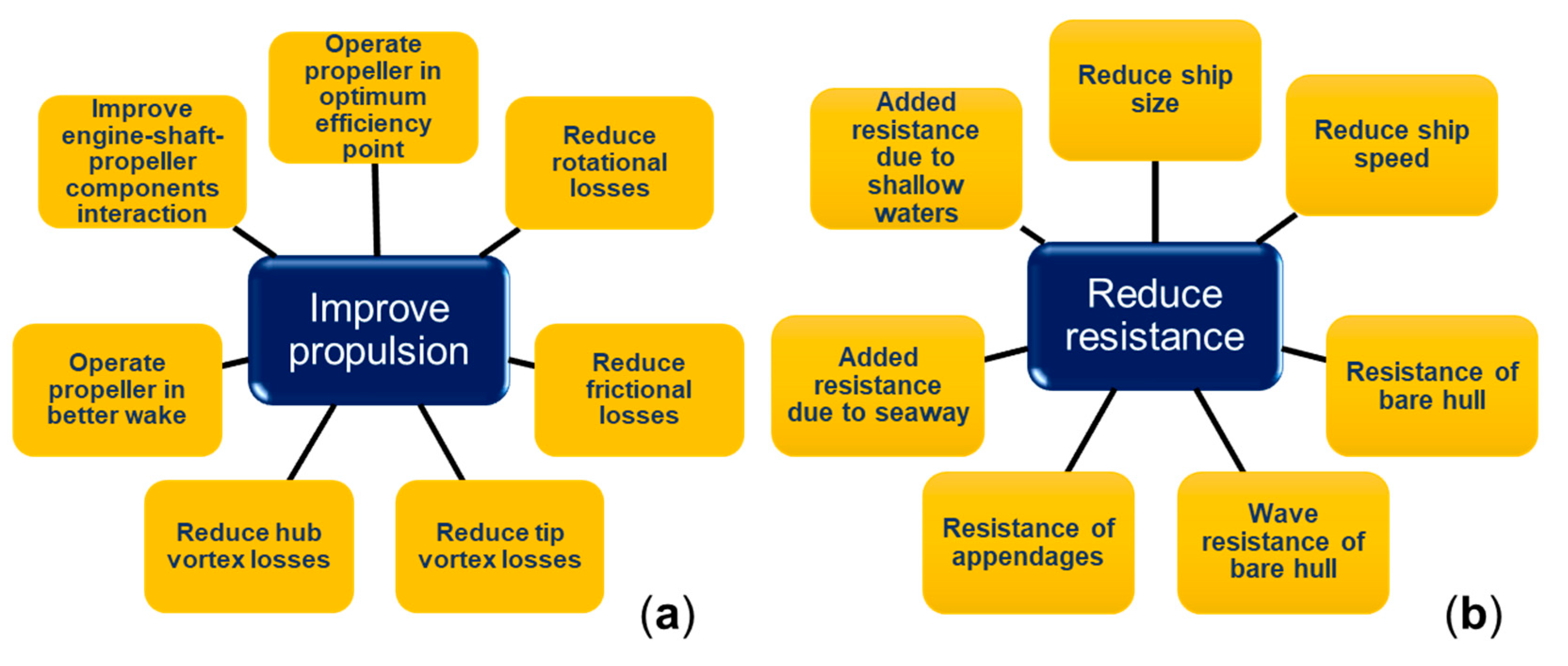
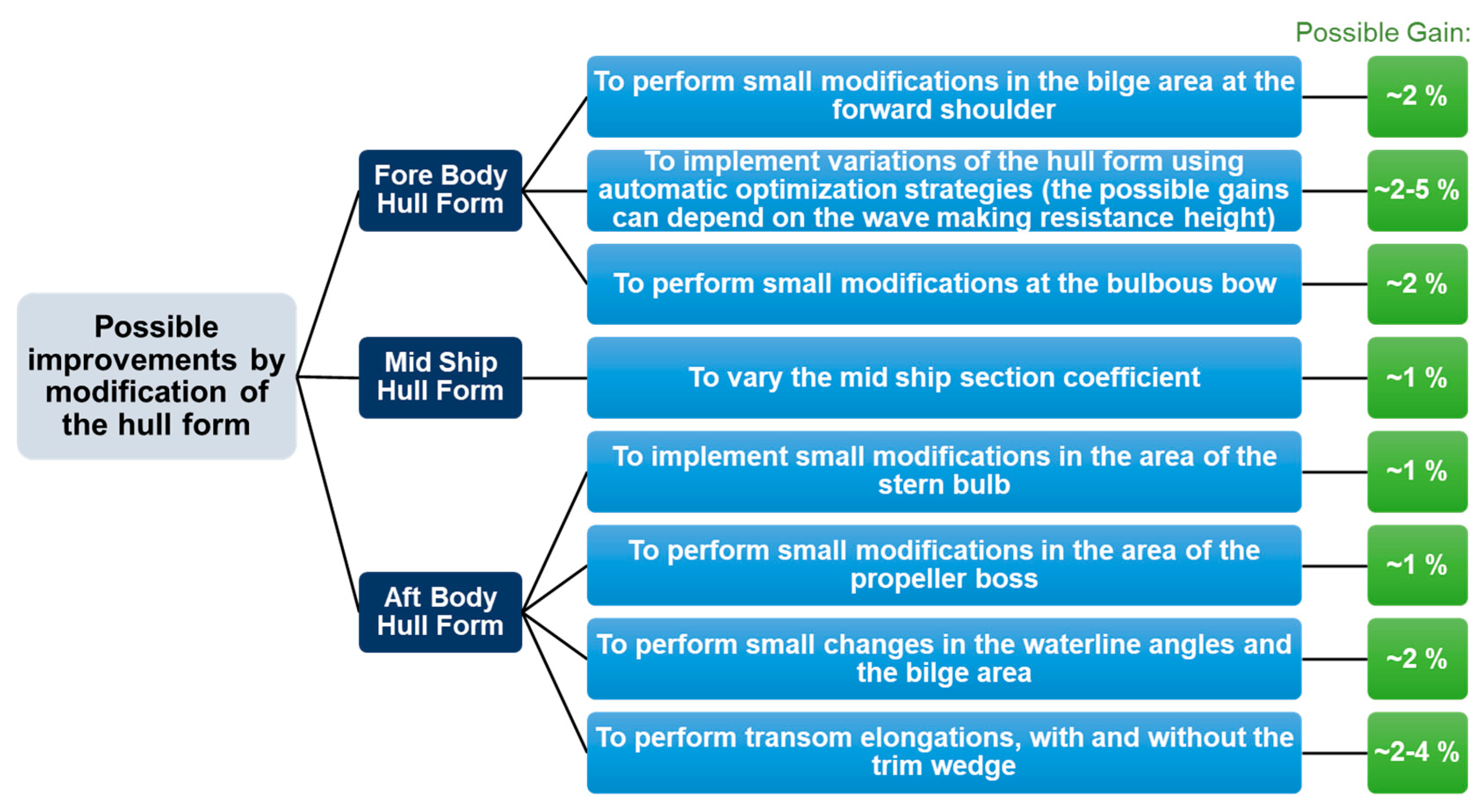
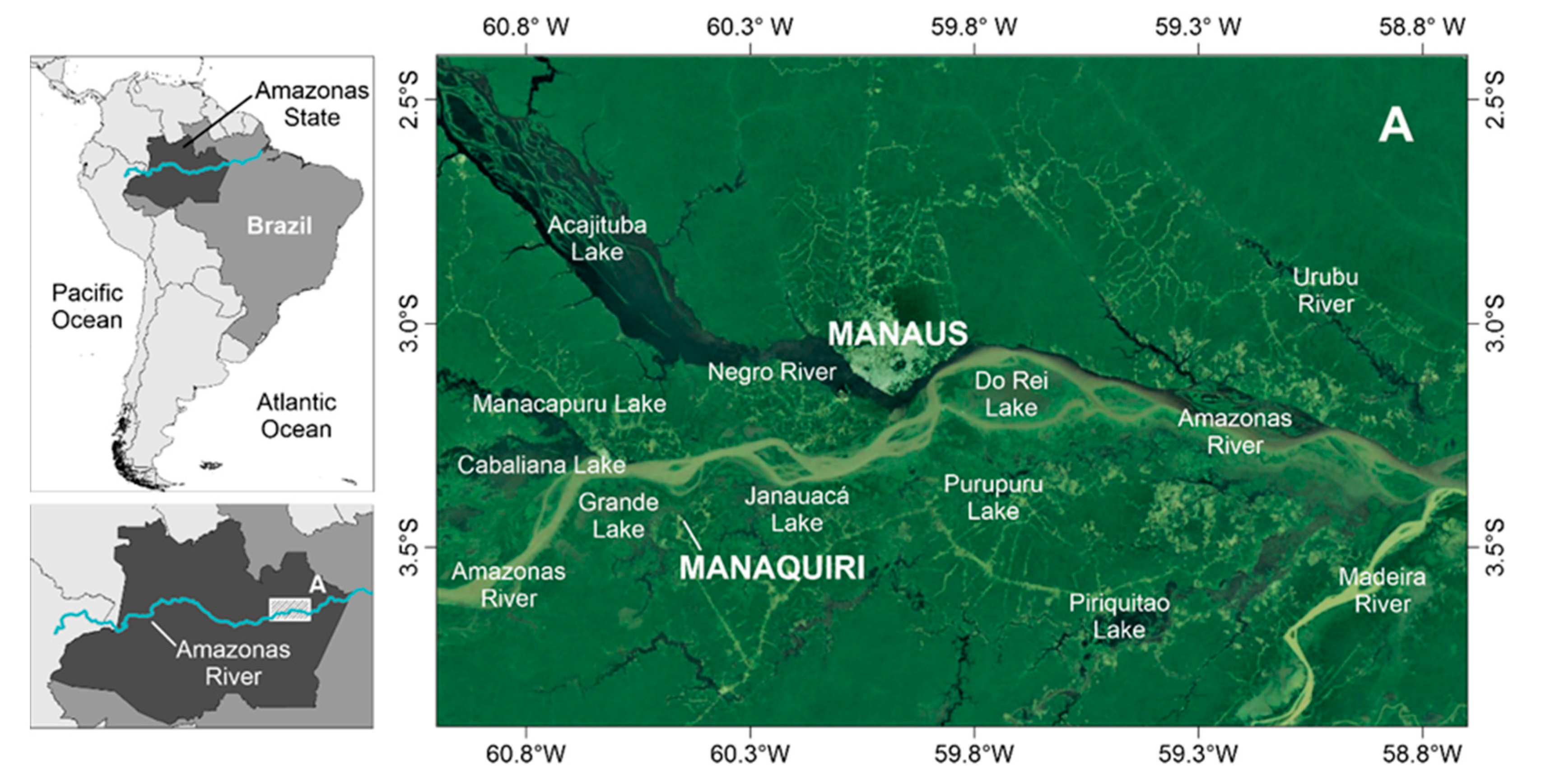
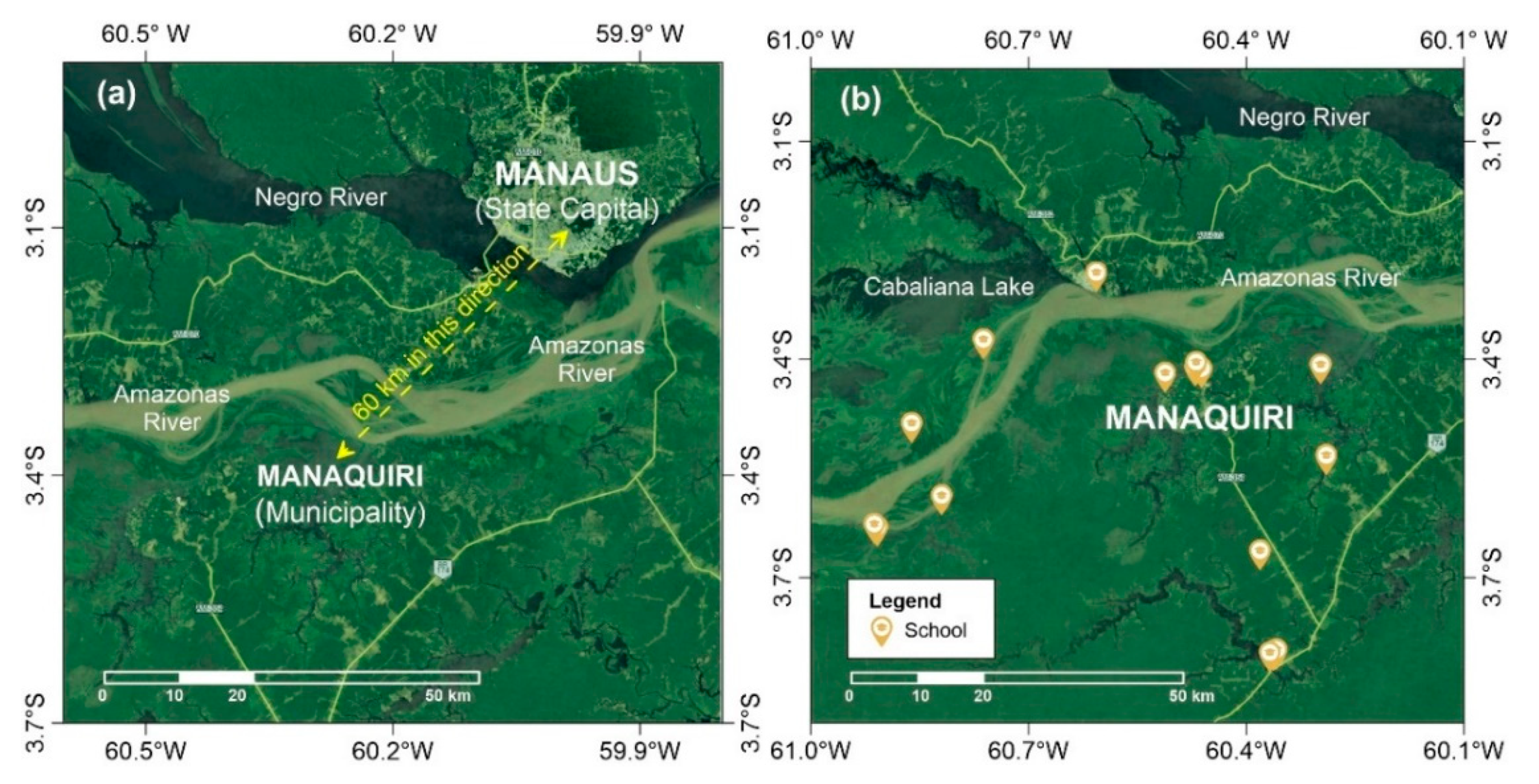

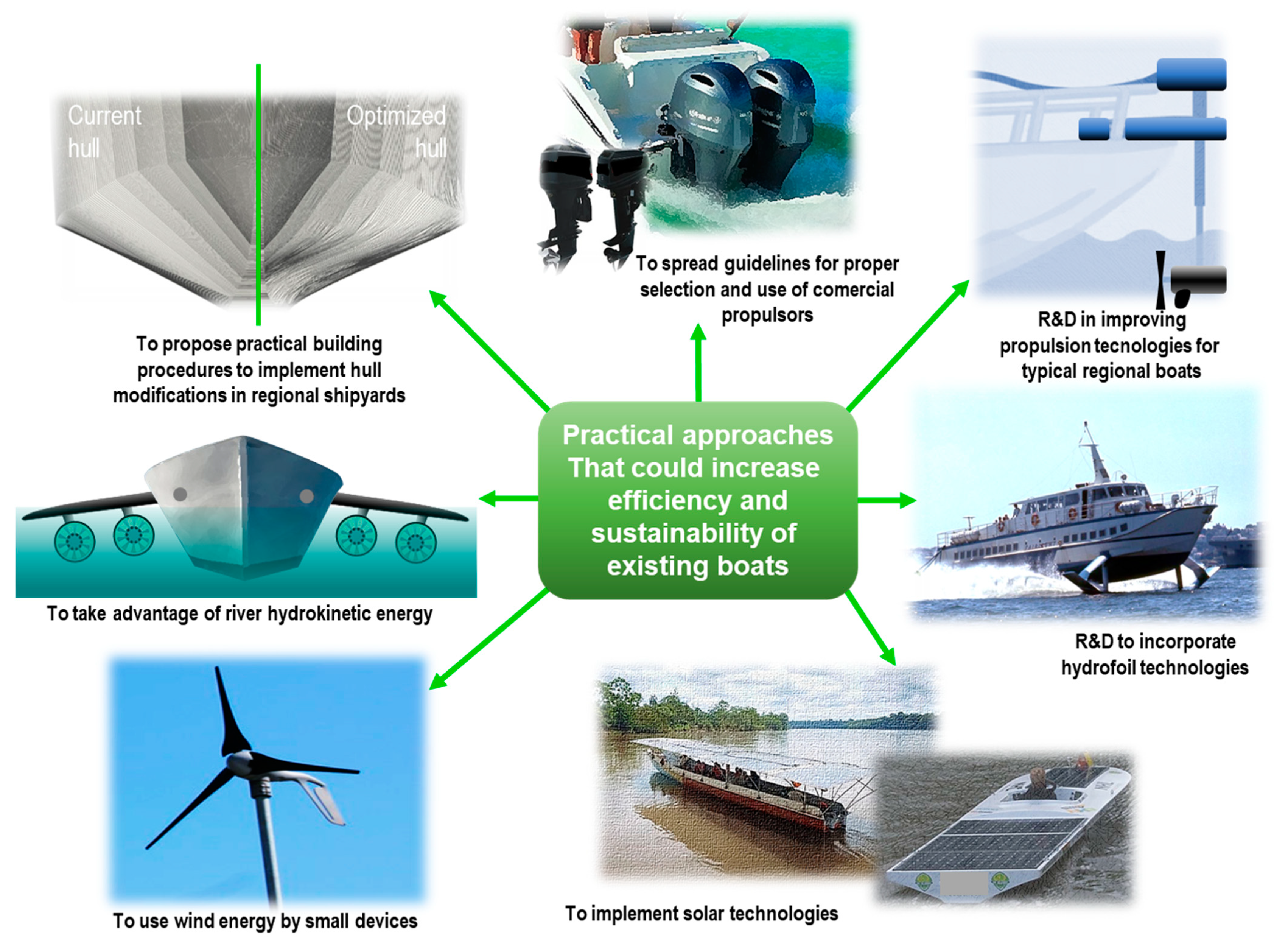
| Gas | Emission Factor * (in g/kg fuel) | Reduction of Emissions per Day ** (in g) | Reduction of Emissions per Year ** (in g) |
|---|---|---|---|
| Carbon Dioxide (CO2) | 3.2 × 103 | 91.20 × 103 | 33.28 × 106 |
| Methane (CH4) | 1.70 | 48.50 | 17.68 × 103 |
| Nitrous Oxide (N2O) | 0.08 | 2.28 | 0.83 × 103 |
| Carbon Monoxide (CO) | 1 × 103 | 28.50 × 103 | 10.40 × 106 |
| Nitrogen Oxides (NO, NO2) | 9.7 | 0.28 × 103 | 10.09 × 104 |
| Non-Methane Volatile Organic Compounds (NMVOCs) | 34 | 0.97 × 103 | 35.37 × 104 |
Publisher’s Note: MDPI stays neutral with regard to jurisdictional claims in published maps and institutional affiliations. |
© 2021 by the authors. Licensee MDPI, Basel, Switzerland. This article is an open access article distributed under the terms and conditions of the Creative Commons Attribution (CC BY) license (http://creativecommons.org/licenses/by/4.0/).
Share and Cite
Hernández-Fontes, J.V.; Maia, H.W.S.; Chávez, V.; Silva, R. Toward More Sustainable River Transportation in Remote Regions of the Amazon, Brazil. Appl. Sci. 2021, 11, 2077. https://doi.org/10.3390/app11052077
Hernández-Fontes JV, Maia HWS, Chávez V, Silva R. Toward More Sustainable River Transportation in Remote Regions of the Amazon, Brazil. Applied Sciences. 2021; 11(5):2077. https://doi.org/10.3390/app11052077
Chicago/Turabian StyleHernández-Fontes, Jassiel Vladimir, Harlysson Wheiny Silva Maia, Valeria Chávez, and Rodolfo Silva. 2021. "Toward More Sustainable River Transportation in Remote Regions of the Amazon, Brazil" Applied Sciences 11, no. 5: 2077. https://doi.org/10.3390/app11052077
APA StyleHernández-Fontes, J. V., Maia, H. W. S., Chávez, V., & Silva, R. (2021). Toward More Sustainable River Transportation in Remote Regions of the Amazon, Brazil. Applied Sciences, 11(5), 2077. https://doi.org/10.3390/app11052077









